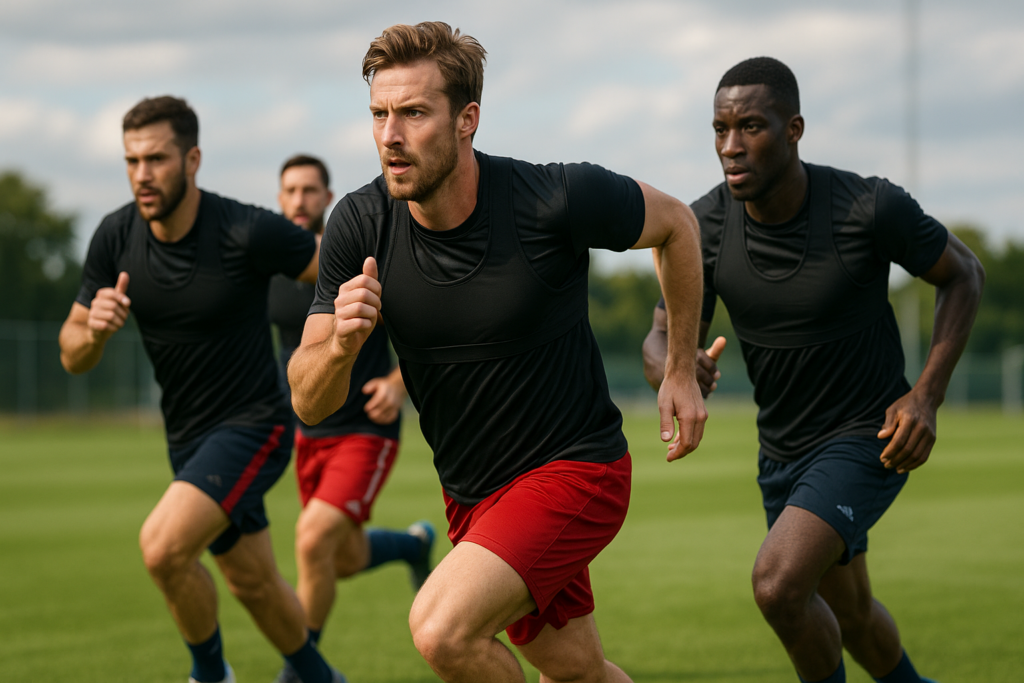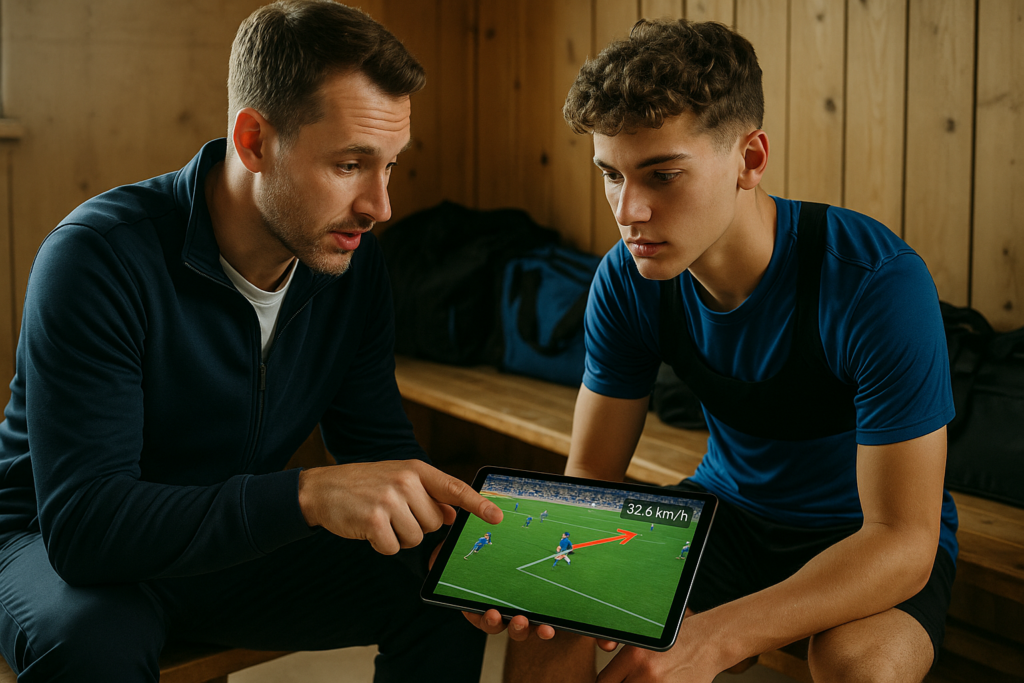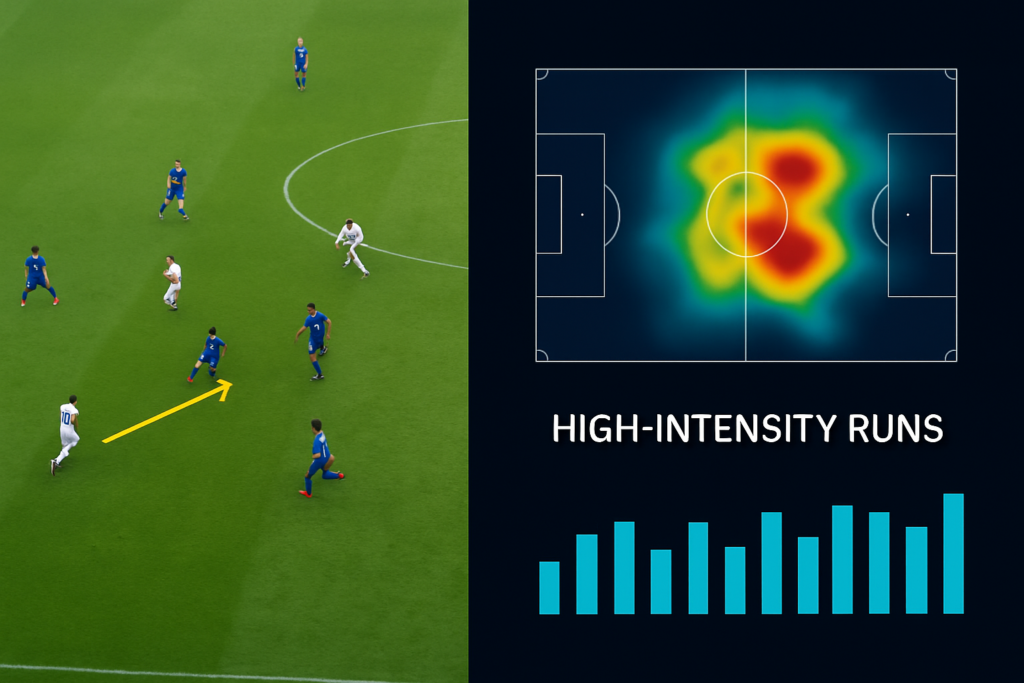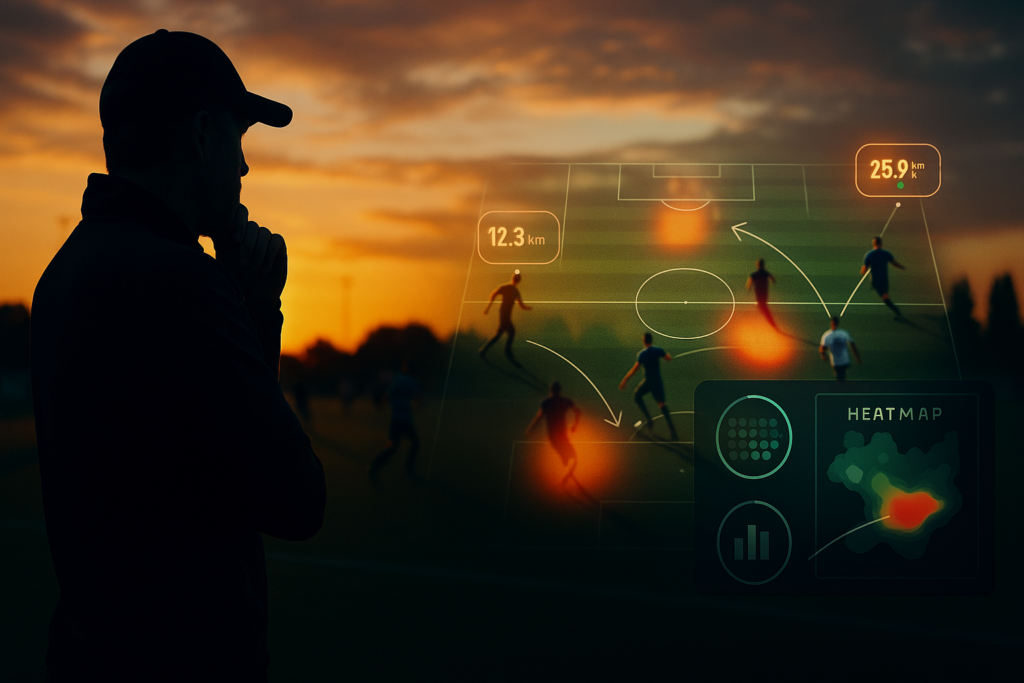
“We just weren’t aggressive enough today.”
“We lacked the willingness to run.”
“The decisive pass didn’t come.”
If you're involved in soccer—whether as a coach, player, analyst, or club official—you’ve probably heard these phrases countless times. For years, this was the foundation of match analysis: a coach’s intuition, a trained eye, and gut feeling.
And while that instinct will always play a role, modern football has evolved. Massively.
Today, performance data and match statistics are not a luxury—they’re essential for training management, tactical planning, and long-term player development. They turn assumptions into facts and help coaches make more objective decisions—whether it's selecting a starting eleven, planning recovery, or preparing for match day.
In professional leagues like the Bundesliga, GPS vests and performance science teams have long been standard. But for most amateur clubs, these tools seemed far out of reach—until recently. Thanks to recent technological advances, the game is changing even at the grassroots level.

What looks like a tight-fitting vest is actually a powerful device. Inside is a GPS tracker that collects a wide range of physical performance data in real time.
Examples?
All this is provided by GPS trackers from suppliers such as Catapult, the market leader in professional sports. And yes: for fitness trainers and performance diagnosticians at the highest level, this data is pure gold.
They help to precisely control the load on each player, prevent injuries, adjust training intensity individually, and ensure that everyone is at 100% on game day.
As exciting as this technology is, it has two major drawbacks for us in the amateur and semi-professional sector.
Firstly: the price.
The cost of equipping an entire team with GPS trackers and the corresponding vests is enormous. And that's just the beginning: there are also regular license fees for the software, server access, updates—in most cases, this exceeds the budget of any club.
Secondly: the effort involved.
Before each training session, vests must be handed out, trackers assigned and charged. Then everything has to be collected again, data read out, assigned to players and evaluated. Anyone who has ever done this knows that it's not something you can do quickly on the side – especially not as a volunteer.
But from a trainer's perspective, the biggest disadvantage is something else entirely – namely, a conceptual one:
GPS tracking does not provide answers to tactical questions.
A tracker shows you that your full-back has run 11 kilometers. But it doesn't tell you why.
Was his movement tactically smart in order to create space? Or did he run back and forth aimlessly because he was in the wrong position beforehand?
He did 36 sprints – okay. But:
Was that because he anticipated correctly? Or because he constantly had to iron out mistakes?
These questions remain unanswered. The bare figures do not help us here.

This is precisely where the real revolution begins—and it affects not only the professionals, but above all of us amateurs.
Instead of relying on expensive devices worn on the body, modern systems use artificial intelligence (AI) to extract performance data directly from video footage. One or more cameras film the game, and smart software automatically analyzes what is happening on the field.
This has two huge advantages:
Whether the run was tactically sound or completely pointless—you can check that out directly in the video. And that's exactly what makes the difference.
The market for analysis tools is changing. Today, there are various systems that rely on video data and/or performance data—but with very different approaches and philosophies. To find the right solution for your club, it's worth taking a look at the toolbox:
If you are a professional team that wants to control the physical strain on your players down to the smallest detail, then Catapult is the tool for you. Data is collected via GPS vests, and the performance data is extremely accurate—but the tactical context is completely missing. What's more, the price is high and the effort involved is considerable.
Hudl is ideal if you want to share, comment on, and analyze tactical scenes. You can upload your video footage, edit scenes, add drawings, and share them directly with your players. Hudl is strong in communication and visual feedback—but does not provide automatically captured performance data.
Wyscout is not a platform for your own games, but a tool for analyzing opponents and scouting. You get access to a huge video database with countless teams and players worldwide—including statistics. Perfect if you are looking for new players or want to prepare specifically for opponents.
And then there is zone14 – the system that integrates tactical video analysis and performance data in one. No GPS, no extra effort. With an automated camera, AI-supported game analysis, and a clear focus on the reality of amateur and semi-professional clubs.

At zone14, we asked ourselves:
Why do you actually have to choose between performance data on the one hand and tactical context on the other?
Why can't both work simultaneously and fully automatically?
That was precisely the starting point for our system: a complete, integrated solution specially developed for the needs of amateur and semi-professional soccer clubs.
The fully automatic camera is mounted once on the floodlight mast or grandstand and records all games and training sessions in crystal-clear 4K quality. No cameraman needed, no operation, no effort.
All footage is automatically uploaded to zone14 REPLAY where coaches can edit clips, add drawings, and analyze tactics.
The key, however, is zone14 STATS:
It extracts performance data directly from the footage:
And every data point is directly linked to the game context.
For example, you click on “10.5 km running distance” for your central midfielder and see every single run in the video.
You will immediately notice:
So könnt ihr Training und Spielanalyse nicht nur auf Daten, sondern immer auch auf dem „Warum dahinter“ aufbauen. Genau das macht moderne Fußballanalyse aus.

The question is no longer whether performance data and video material should be used in soccer. The question is: How can this be done in the smartest way possible—and in a way that fits in with everyday club life?
Catapult remains an exciting tool for pure performance diagnostics in the professional arena.
For coaches who want to share tactical feedback and video clips with their team, Hudl is a strong choice.
And when it comes to scouting and opponent analysis, there's hardly any way around Wyscout.
But: If you are looking for a comprehensive, affordable, and easy-to-use system that will help you advance on all levels—physically, tactically, and organizationally—then zone14 is exactly the right tool for you.
It is the only system that automatically records and extracts performance data and links it to tactical gameplay. No frills, no additional hardware, no half-baked solutions—just modern game analysis tailored to everyday life in amateur and semi-professional soccer.